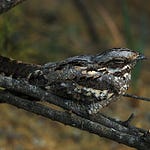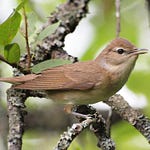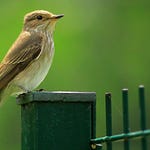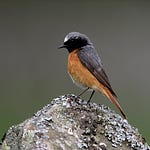Here’s a call to stir the hardest heart.
The cries of whooper swans can be heard from October to March, from high mountain tarns and reservoirs of the north and west of the UK to the lowland arable fields of the Wash and the Fens.
The trumpeting, two-note honk, gives us the ‘whooper’ of their common name (though ‘hoo-ha’ fits nicely too).
Swans tend to travel in family groups, hoo-ha-ing to keep in touch as they go. It’s a sound seemingly made for echoing between mountainsides, or to ring out across cold, foggy fields and estuaries.
Whoopers are one of our two kinds of winter-visiting swans, along with the daintier Bewick’s. Both have yellow on the beak, rather than the orange of our resident mute swans. On the whooper the colour tends to be wedge-shaped and more extensive than the Bewick’s.

(Famously, individual Bewick’s can be identified by the patterns on their bills, as demonstrated by close observation of the regular winter herd at Slimbridge in Gloucestershire. Perhaps whoopers can be too, with similar levels of scrutiny.)
Whooper swans breed across the fringes of the Arctic, from Northern Europe to the Pacific coast of Siberia. In North America they are replaced by their counterpart species, the similarly huge, all-black-billed trumpeter swan.
The great majority of the 10,000 or so whooper swans that arrive in the UK each autumn have spent the summer in Iceland, though in recent decades a few tens of pairs have nested in scattered spots across Scotland and Northern Ireland.
Swan songs / Swanson
There is some mystery to the expression ‘swan song’, in its meaning as a farewell performance. It may be the whooper swan that gave rise to it.
The idea of the ‘swan song’ has its roots in the story that a dying swan may emit a long final series of cries, utterly unlike its calls in life.
This notion has been passed down from the ancient Greeks, and while it has been dismissed as poetic fancy in modern times, there are credible reports of wild swans such as whoopers or Bewick’s making strange, song-like sounds in their final moments, as they fall to earth or water.
Whatever the truth of the swan song, we ought to credit the expression for its role in making a cultural icon of the 21st century.
Here’s Ron Swanson discovering something to love about Europe after all.
In this clip, Ron is clearly, definitely, unmoved by the words of Robert Burns:
O were my Love yon Lilack fair,
Wi' purple blossoms to the Spring;
And I, a bird to shelter there,
When wearied on my little wing.
How I wad mourn, when it was torn
By Autumn wild, and Winter rude!
But I was sing on wanton wing,
When youthfu' May its bloom renew'd.
For more on the context for this scene, and other welcome upwellings of poetry in popular culture, try the very delightful PopPoetry Substack by Caitlin Cowan.
Next time: Yellow-browed Warbler
🌅 London & Brighton walkshops - March 2025
Determined to untangle your blackbird from your mistle thrush? Or treecreeper from wren? Join me for a morning of birdsong on Wimbledon Common or in Stanmer Park next spring.
There’s a £10 discount for paying subscribers to Shriek of the Week (see subscriber-only email or contact me for details).
☕️ TOMORROW! Early Bird Club - Saturday 5 October 8-9am (UK time)
Early Bird Club is our globe-trotting Springwatch-style hour. Just live streaming bird sights and sounds, with text chat and a cup of tea in hand, via Zoom.
Open every first Saturday of the month to all on the paying supporter tier of Shriek of the Week. See separate emails for the Zoom link, or contact me if you need a reminder.
Enjoy the birds.
~ Charlie













Share this post